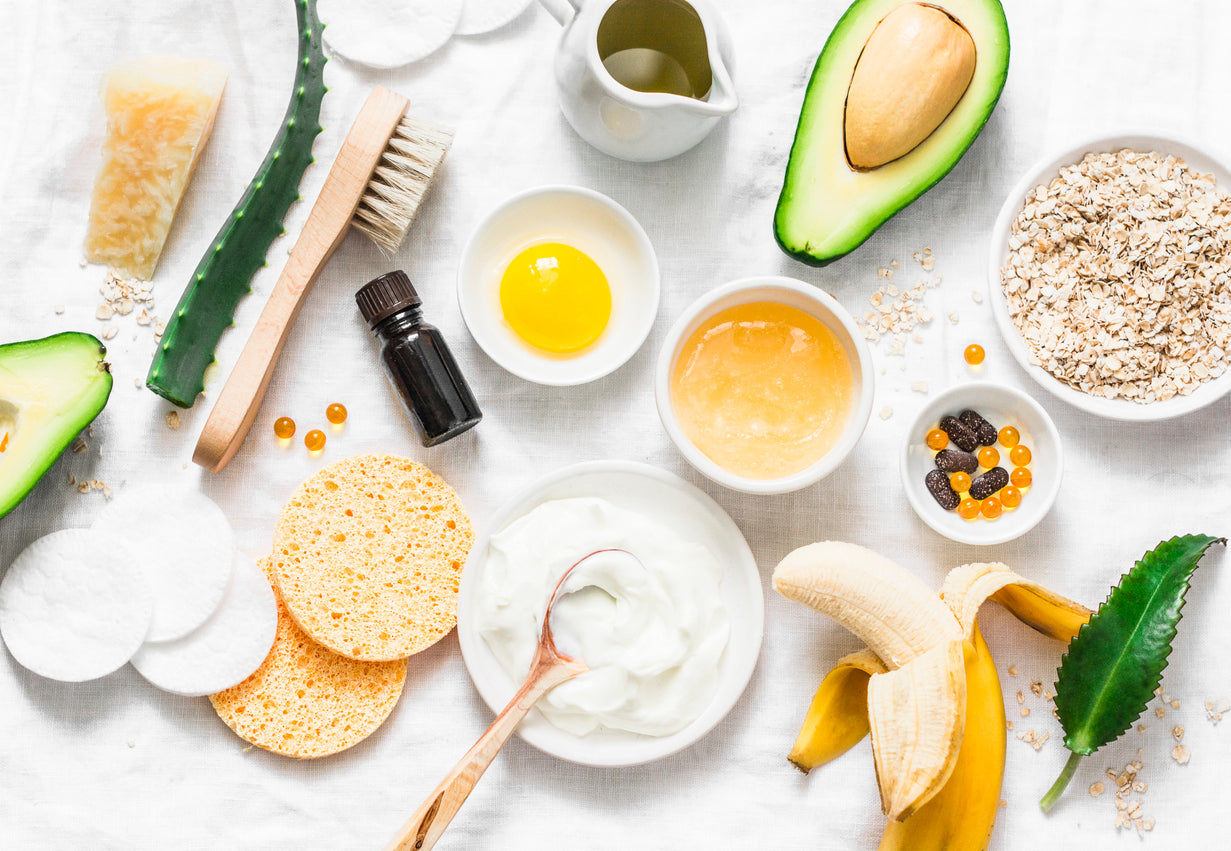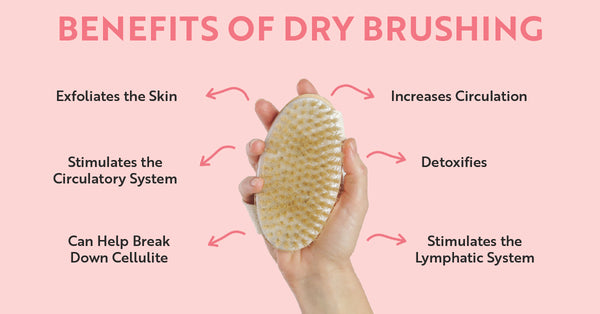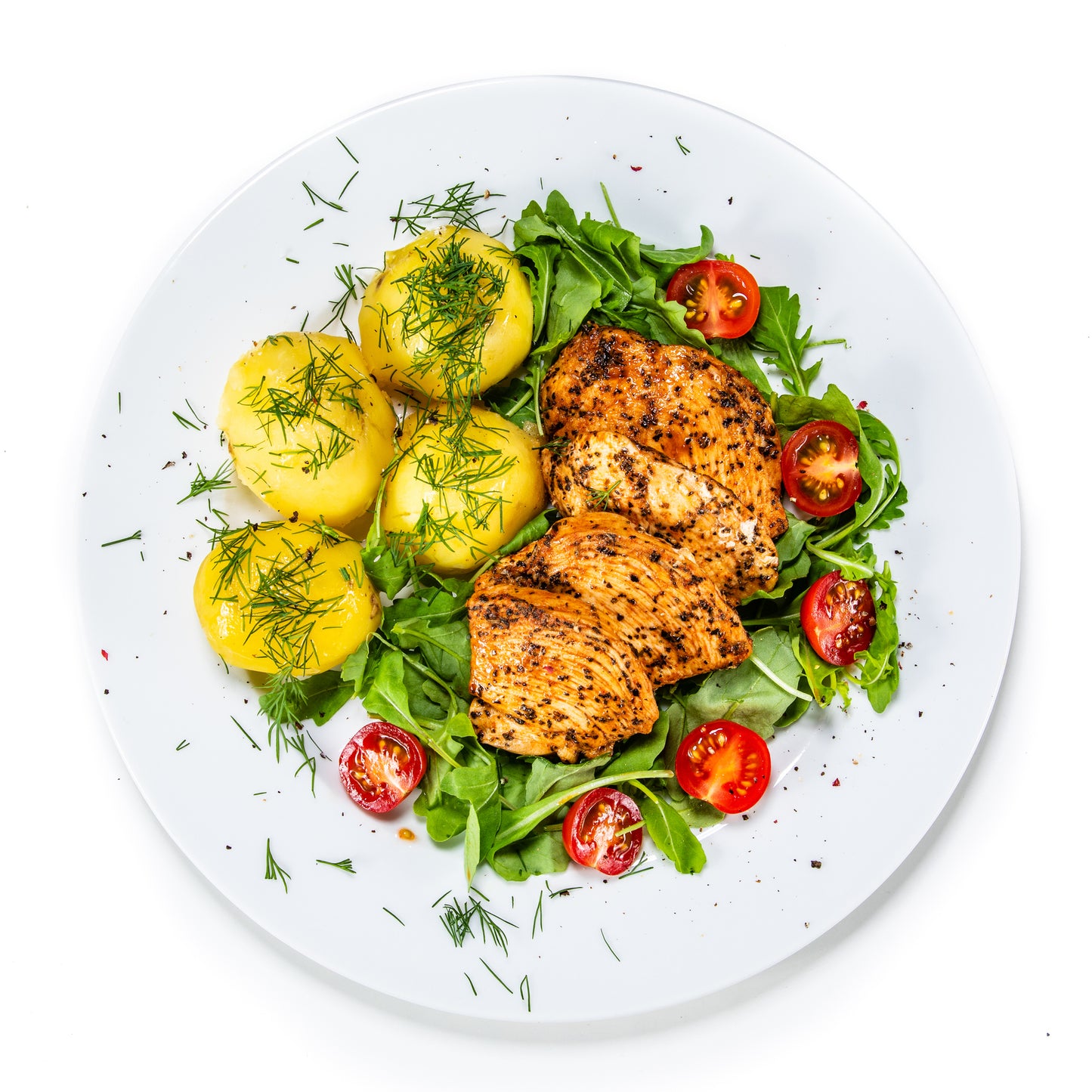
How To Get Healthy Skin Inside and Out
Would you believe me if I said healthy skin starts from within? Well, it’s true! Just like every other organ in your body, your skin needs a steady stream of nutrients to thrive. And to look and feel great.
Plus, problematic skin, especially conditions such as acne, eczema and psoriasis, is often a sign that something on the inside isn’t quite right. And when this is the case, the food you eat — or don’t eat — is often one of the biggest factors. Now, this doesn’t mean you don’t need any skincare products or a healthy beauty regimen. But you can’t underestimate the importance of nutrition when it comes to your skin.
So, I’m going to share my top internal and external “plump and glow” tips.
Nourish Your Skin from Within
Hydrate, Hydrate, Hydrate
When it comes to healthy skin, both hydration and moisturization are essential. But it’s important to recognize that they actually mean two completely different things. Hydration solely comes from drinking nourishing fluids and eating fresh fruits and vegetables. Because it relates to the water that gives your skin cells their shape and keeps them plump and juicy.
On the other hand, if your skin cells are dehydrated, they shrivel up and die. And this is what leads to the dreaded wrinkles, sagging, and dull skin. No, thank you! So dehydrated skin lacks water from the inside.
Do you have a hard time getting enough water every day? Try my favorite hydrating water infusions to add a little flavor to each glass!

On the other hand, when we talk about moisturization, we’re referring to oils. And a lack of oils leads to dry skin.
Eat Healthy Fats
We must tackle moisture from the inside and out. And one of the ways to keep your skin from drying out, is by eating healthy fats from whole foods such wild salmon, avocado, coconut, olives, nuts, and seeds. Your body MUST get these fats from your diet to produce its own oil, known as sebum, which provides a protective layer on your skin and keeps it moist.
But the benefits of healthy fats for your skin don’t stop there. Omega-3 fatty acids, such as those found in fish, are anti-inflammatory. So, they can help reduce redness and swelling.
Many healthy high fat foods (i.e. almonds, avocados, olives) also contain vitamins A and E. And these vitamins are potent antioxidants, which help prevent skin damage and slow the signs of aging. Plus, both of these vitamins boost collagen production, which is what gives your skin its elasticity and keeps it plump and wrinkle-free.
Which leads to my next tip...
Eat Collagen-Boosting Foods
I’ve already mentioned vitamins A and E when it comes to boosting collagen. But vitamin C is also essential. Without a sufficient supply of vitamin C, your body can’t make new collagen. Period. Fortunately, vitamin C is found in many of these fruits and vegetables in high doses:
- Strawberry
- Brussels sprouts
- Orange
- Kiwi
- Grapefruit
- Red bell pepper
- Broccoli
- Papaya
- Kale
- Pineapple
And as you already know, I’m a HUGE fan of bone broth and collagen protein powders. Because both are excellent sources of the amino acids (i.e., glycine and proline) your body needs to build collagen. Numerous experimental studies have shown that collagen protein powder (a.k.a. hydrolyzed collagen) is readily absorbed by the body and efficiently transported to the deepest layers of your skin where it works its magic.
And by magic, I mean plumping the skin to erase wrinkles, reverse sagging, fade stretch marks, and reduce cellulite. Yes, please! In addition to boosting your collagen, it’s also important to protect the collagen you’ve got. And antioxidants are the key. You’ll get them by eating an abundance of color fruits and vegetables, such as red beets and peppers, orange carrots and sweet potatoes, dark leafy greens, and purple berries.
Supplement with Prebiotics and Probiotics
Now, this is the key for balancing your gut microbiome and creating an environment that allows your skin to flourish from the inside out. But what exactly are prebiotics and probiotics?
Prebiotics feed the healthy bacteria in your gut, while probiotics are living bacteria added to your microbiome. And you need both to prevent your system from becoming overrun with bad bacteria. Because when that happens, it’s a one-way ticket to bloating, sugar cravings, and yes, clogged pores and blemishes.
On the other hand, finding the right pre- and probiotic blend is going to strengthen and support your gut, and show up through your skin. Some probiotic-rich foods you can add to your diet, include:
- Pickles
- Greek yogurt
- Kombucha
- and kimchi.
But in reality, you only need two specific probiotics, Lactobacillus paracasei and Lactococcus lactis, and one main prebiotic, XOS, that will target your gut and your skin at the same time.
You see, these probiotic strains are the only two that have been scientifically proven to aid the skin and gut. And here's what they can do! I consider L. paracasei “wrinkles’ worst enemy” because it encourages the release of TGF-beta, which stimulates new cell growth. That means it repairs tissue in the gut barrier and on the outer layer of the skin.
Then L. lactis comes in and strengthens and amplifies the benefits of L. paracasei by balancing gut bacteria, which boosts digestion and eases bloating.
And as for the skin, L. lactis has been proven to increase skin hydration, making it plump, dewy, and more resistant to fine lines and wrinkles.
Nourish Your Skin from the Outside
Choose Your Products Wisely
It’s important to avoid chemical-laden products. Because not only can these toxins make it into your bloodstream, but they’re also very harsh on your skin, causing irritation and stripping your skin of its natural moisture. That’s why I recommend sticking to truly natural products, such as one of my favorite brands — Annmarie Gianni Skin Care.
Tone
The main purpose of a cleanser is to wash away dirt and impurities. But in the process, it also washes away oil and changes the pH of your skin. Therefore, I always recommend using a natural toner to rebalance your skin’s pH and close and tighten your pores. Toners also help your skin better absorb the nutrients in your serum, cream, or moisturizer (if applied when your skin is still a bit wet).
You have many choices when it comes to toners. Personally, I love toning spritzes that contain simple, yet effective ingredients, such as witch hazel, aloe vera juice, floral hydrosols, and essential oils.
Moisturize
Many people shy away from oil. But in most cases, oil is your skin’s best friend — even for those with oily skin and acne. Oils can penetrate your skin and provide a healthy source of moisture. And when your skin has the moisture it needs, your body stops producing excess oil.
Plus, oils naturally contain an abundance of nutrients that fight inflammation and prevent free radical damage at the surface level. And all you’re left with is soft, glowing skin. While there are many amazing oils used in natural skincare, some of my favorites include:
- Rosehip seed oil: packed with skin-brightening, collagen-boosting, wrinkle-reducing vitamin C and other antioxidants
- Jojoba oil: a highly moisturizing oil that resembles your skin’s sebum
- Rose essential oil: moisturizes, prevents water loss, reduces inflammation, and improves the texture of your skin
Apply Serums Freely and Liberally
Just like eating antioxidant-rich foods can help fight free radical damage, using antioxidant serums has the same effect. Antioxidant serums can help protect your skin from the effects of free radicals from stress, smoke, UV rays, blue light, etc., which reduces the effects of aging, like fine lines and wrinkles. But it’s not just a one-and-done type of deal. You should use your serums liberally every morning and night to heal and nourish your skin. Like with anything, you’ve got to stick with it to really see results.
Now, if your head is already reeling about which antioxidant serum to buy, don’t worry. Here’s an easy-to-make homemade antioxidant serum using one of my favorite antioxidants — Vitamin C! Remember to make small batches of your serum each week so that it doesn’t go bad and begin to do more harm than good!

Exfoliate
Exfoliation refers to the removal of dead skin cells on the surface of your skin. When dead skin cells collect, age spots appear darker, wrinkles appear deeper, and the skin appears duller. Thus, exfoliation allows plump, new cells to emerge and shine. There are many methods of exfoliation:
- Physical Scrubs — You can remove dead skin cells physically with a facial scrub. But the trick is to be gentle because it can cause irritation and inflammation if you overdo it.
- Chemical exfoliants — You can use certain exfoliating ingredients, such as alpha hydroxy acid (AHA), to “chemically” remove dead skin cells and stimulate skin renewal. And fortunately, there are many natural sources of AHA, such as citrus fruits, sugarcane, milk, and apples, that natural skincare companies can rely on.
- Dry Brushing — This form of exfoliation targets the entire body and can even be used on your face. Not to mention, dry brushing boosts blood circulation to the skin. There are plenty of dry brushing kits on Amazon with varying handle lengths and sizes for various areas.
- Dry Brushing Tip: Use long strokes or circular motions to brush your entire body starting at the soles of your feet, working your way up. Remember to always brush towards the heart!

Mask
I love to draw a warm bath, apply a face mask, and settle in for a soak. Most masks are designed to deep clean your pores, exfoliate, and/or nourish your skin with anti-inflammatory and antioxidant nutrients. Thankfully, I’ve got you covered with the perfect hydrating mask!
My two-piece mask is infused with plant-based collagen, brown seaweed extract, and amino acids that penetrate the deepest layers of your skin and encourage collagen synthesis. It’s perfect for revitalizing your skin before a night out — or as a cooling and comforting act of self-care after to keep your face plump and hydrated.
And unlike toning and moisturizing that are required daily, a mask once or twice a week is usually all you need to keep your skin healthy and beautiful.
To Sum it Up…
When your skin looks and feels good, you have more confidence to face the world. And it even boosts your mood. So if you want that “plump and glow” look, you must nourish your skin from both the inside and out. This means staying hydrated, eating nutrient rich foods, and sticking to natural skincare products that gently cleanse, tone, moisturize, and exfoliate your skin.
Keep thinking big and living BOLD!









